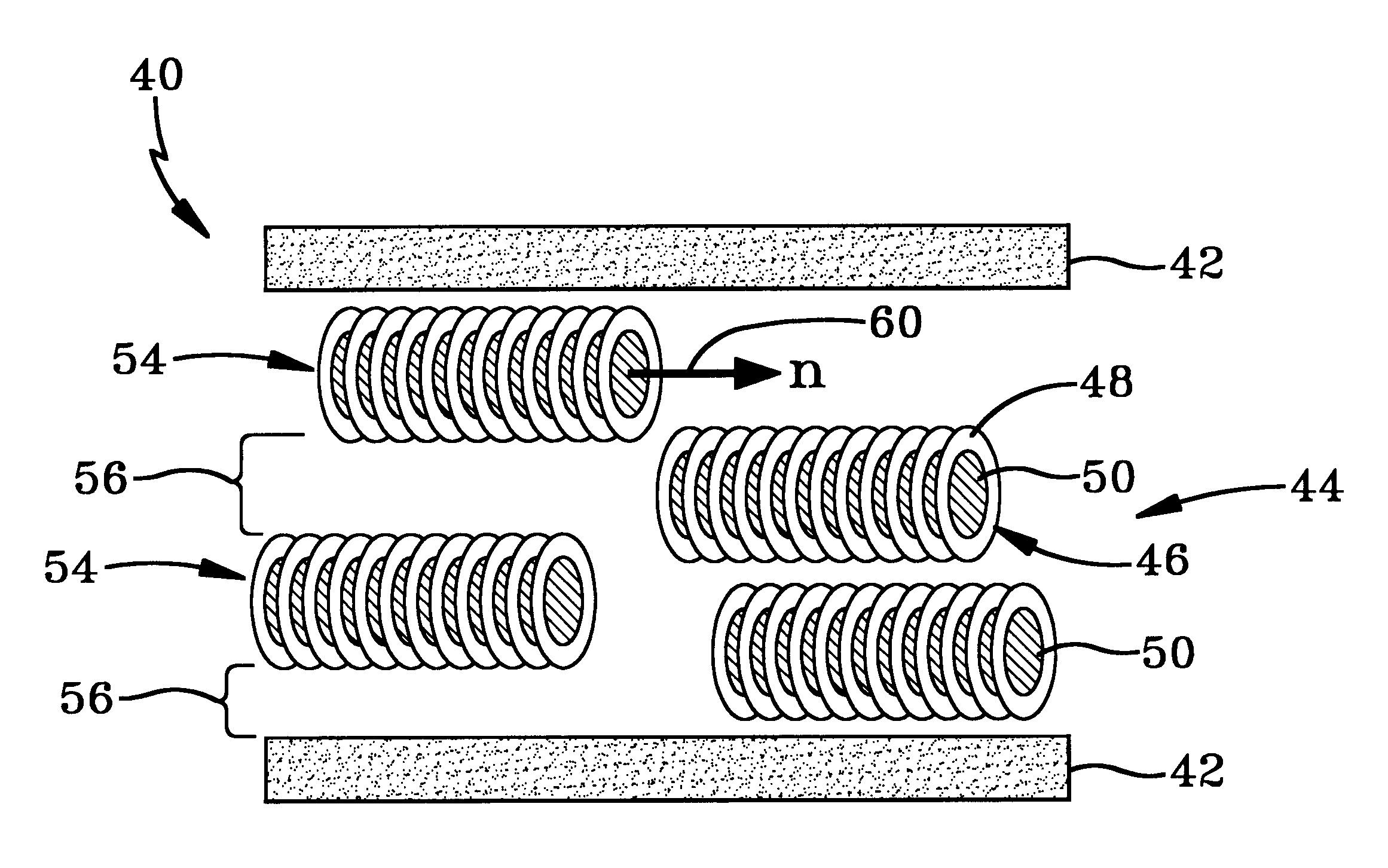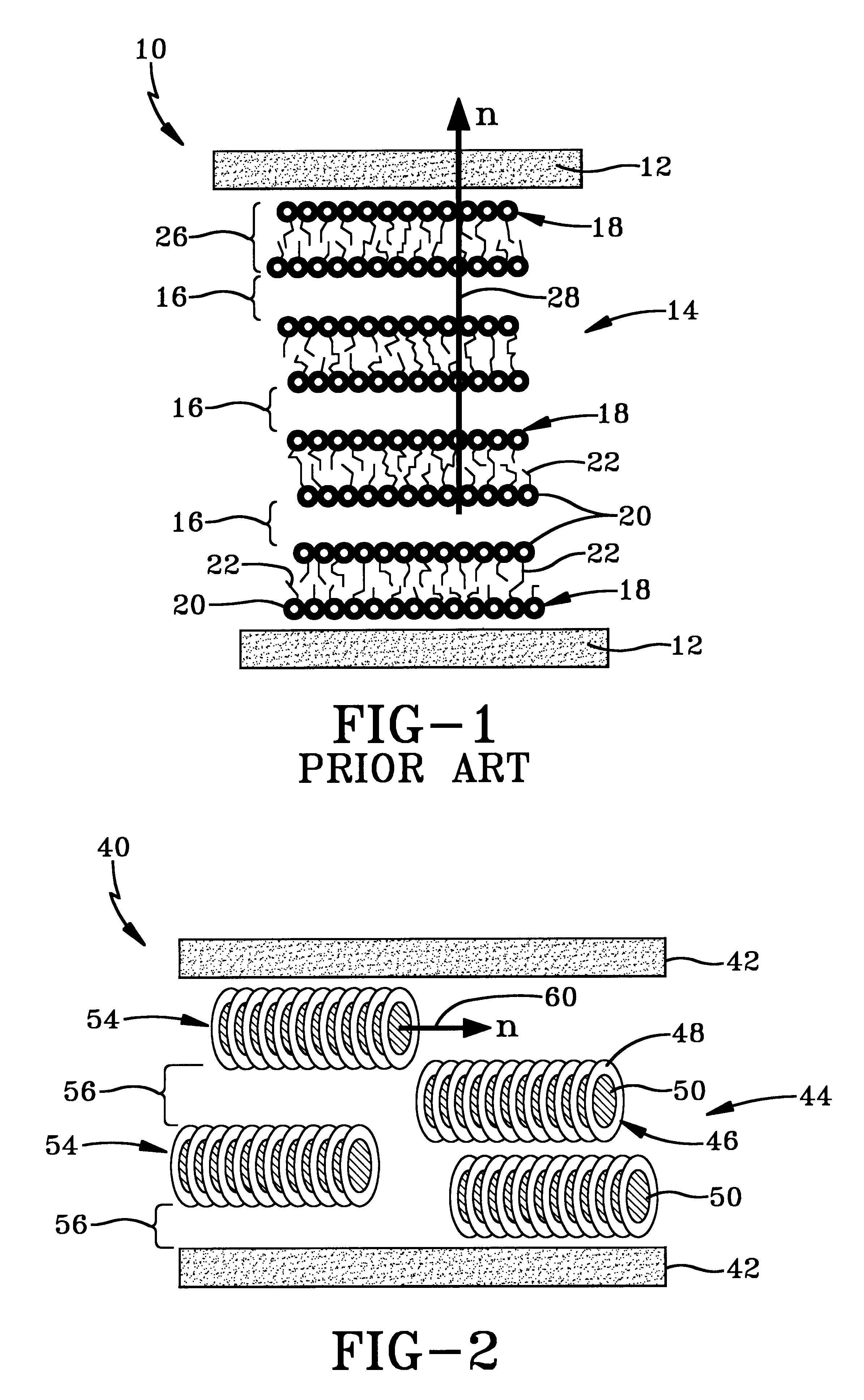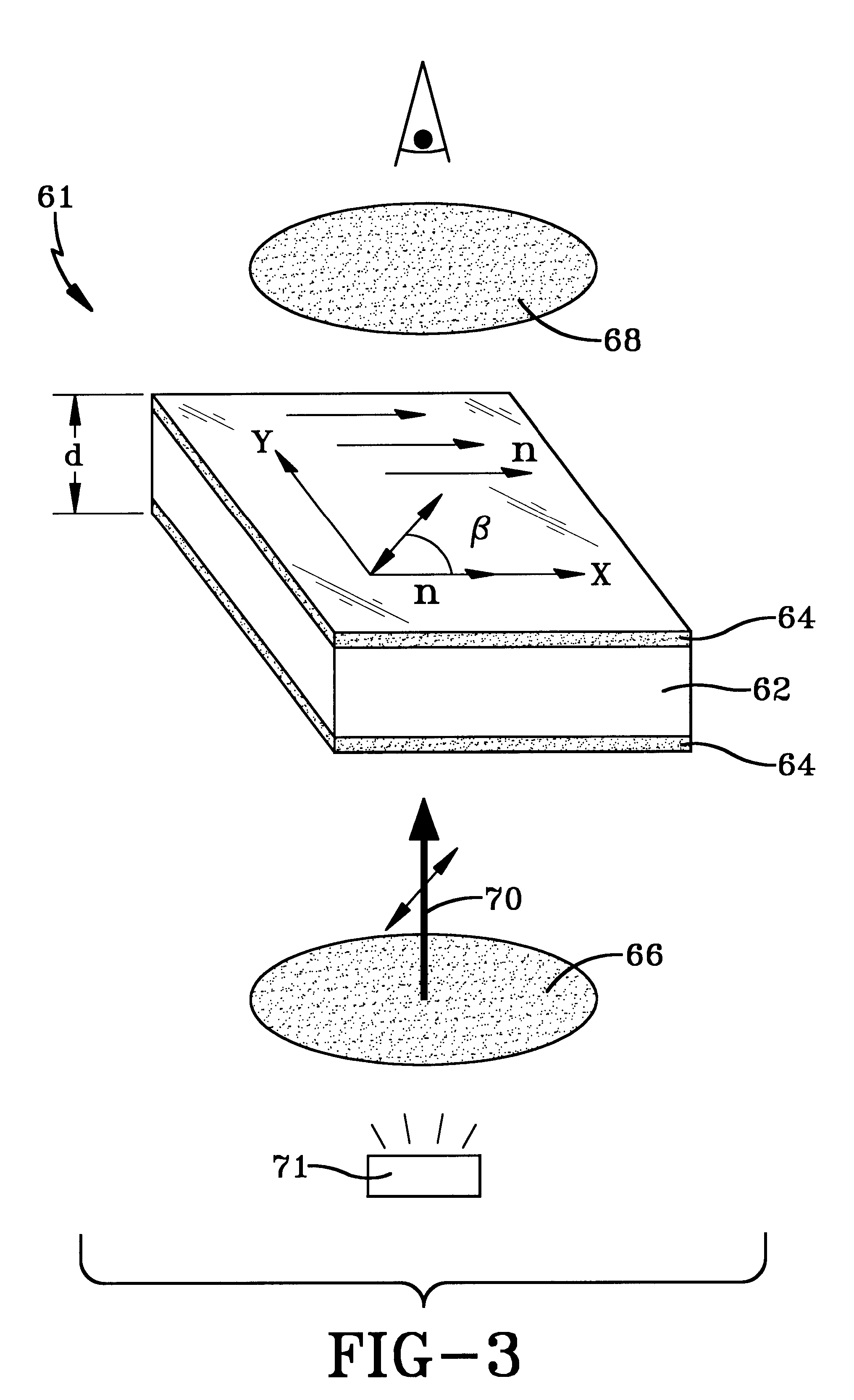Lyotropic chromonic liquid crystals
a liquid crystal and chromonic technology, applied in the field of alignment of lyotropic liquid crystals, can solve the problems of adversely affecting the interaction between the liquid crystal and the ligand, the lyotropic liquid crystal is more difficult to align than its thermotropic counterpart, and the lyotropic liquid crystal is not necessarily applicable to the lyotropic liquid crystal. , to achieve the effect of facilitating the orientation of the whole surfactant bilayer, efficient detection of ligands
- Summary
- Abstract
- Description
- Claims
- Application Information
AI Technical Summary
Benefits of technology
Problems solved by technology
Method used
Image
Examples
example 2
Bulk Alignment of the LCLC by the Polymer SE-1211
To make a cell of LCLC comprised of water solutions of Cromolyn bulk-oriented, glass substrates are washed in an ultra sonic bath of alconox detergent and water for 10 minutes at 60.degree. C. The substrates are then removed and dried. SE-1 211 (Nissan Chemical, Japan) at a concentration of 2% was coated onto the glass substrates by a spincoateer at 1500 rpm. The solvent was dried at 100.degree. C. for 2 minutes prior to baking the substrates at 180.degree. C. for an hour. The thickness of the resultant polymer film is 250 nm. An aluminum block covered with felt rubs the polymer-coated surfaces twenty times. The rubbing conditions are as follows; the dimension of the bloc are 3.times.7.5.times.0.75 inches, the pile length of felt is 1 / 8 inch, the pressure is 0.12 lb / in.sup.2, and the speed 10 in / sec. The cells are then made using the two substrates where the rubbing direction on the top and bottom plates is in opposite directions. The...
example 3
Bulk Alignment of the LCLC by the Polymer SE-610
To make a cell of LCLC comprised of water solutions of Cromolyn bulk-oriented, glass substrates are washed in an ultra sonic bath of Alconox detergent and water for 10 minutes at 60.degree. C. The substrates are then removed and dried. SE-610 (Nisson Chemical, Japan) at a concentration of 4% was coated onto the glass substrates by a spincoater at 1500 rpm. The solvent was dried at 100.degree. C. for 2 minutes prior to baking the substrates at 250.degree. C. for an hour. The thickness of the resultant polymer film is 330 nm. An aluminum block covered with felt rubs the polymer-coated surfaces three times. The rubbing conditions are as follows; the dimension of the block are 3.times.7.5.times.0.75 inches, the pile length of felt is 1 / 8 inch, the pressure is 0.12 lb / in.sup.2, and the speed 10 in / sec. The cells are then made using the two substrates where the rubbing direction on the top and bottom plates is in opposite directions. The cel...
example 4
Bulk Alignment of the LCLC by SiO Evaporation
To make a cell of LCLC comprised of water solutions of Cromolyn bulk-oriented, glass substrates are washed in an ultra sonic bath of Alconox detergent and water for 10 minutes at 60.degree. C. The substrates are then removed and dried. The glass substrates are then placed in a vacuum chamber with less then 10.sup.-6 Torr. SiO was evaporated and deposited onto the surface of the glass substrates. The substrates are placed such that the influx of SiO is at a 5.degree. angle as measured from the surface of the glass. The distance between the glass and the evaporation source is about 40". The thickness of the SiO alignment layer is 150 nm. The cells are then made using the two substrates where the SiO evaporation direction on the top and bottom plates is in opposite directions. The cell thickness was controlled by 20 .mu.m spacers. The LCLC, comprised of a 12% aqueous solution of Cromolyn in water, filled the cell by capillary effects. Normal...
PUM
| Property | Measurement | Unit |
|---|---|---|
| thickness | aaaaa | aaaaa |
| thickness | aaaaa | aaaaa |
| thickness | aaaaa | aaaaa |
Abstract
Description
Claims
Application Information
 Login to View More
Login to View More - R&D
- Intellectual Property
- Life Sciences
- Materials
- Tech Scout
- Unparalleled Data Quality
- Higher Quality Content
- 60% Fewer Hallucinations
Browse by: Latest US Patents, China's latest patents, Technical Efficacy Thesaurus, Application Domain, Technology Topic, Popular Technical Reports.
© 2025 PatSnap. All rights reserved.Legal|Privacy policy|Modern Slavery Act Transparency Statement|Sitemap|About US| Contact US: help@patsnap.com



